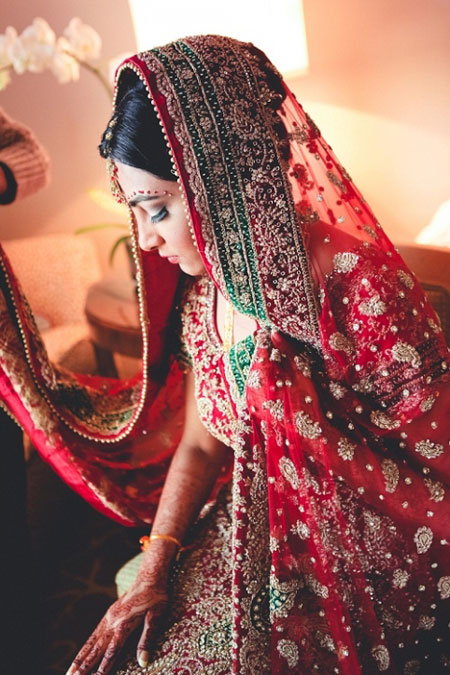
Continuing through July 12, 2013
This extraordinary installation incorporates an altar with a brightly colored rangoli designs, photographs from three Indian weddings by Sohil Maknojia, audio clips by Rati Ramadas Girish, a video by Dylan Reid, and many objects and elements essential to the ritual of Indian weddings. Researched by Rati Ramadas Girish and designed by HAA Program Associate Angel Quesada, the show is not just beautiful, it is educational, allowing visitors a glimpse into a world of artistry and tradition. The audio clips are brief interviews with brides, grooms, family members and others in which they discuss various aspects of Indian weddings, which may last for days. Unlike western weddings, with their emphasis on the bride and groom, Indian weddings are more about family and community, and the joining of two social worlds. Customs vary by region, but some basic Hindu rites are common to all.
Photographs portray five significant features of the ceremony: the Anterpat, a screen that symbolizes the separate lives of the bride and groom; the Kanyadaan, a ceremony in which water flows from hand to hand signifying the transition of the bride into her new relationship; the Mangulstra, a wedding necklace that saves the same purpose as the ring in western ceremonies; the Pheras, a ceremonial fire signifying righteousness, prosperity, love and spiritual enlightenment for the couple; and the Saptapadi, seven steps the couple take that are a metaphor for the vows made before entering married life.
Additional photographs depict the Baraat, a procession by the groom and his family and friends to the wedding site in which they dance their way through the streets to meet the bride’s family. The bride’s adornment, or Shringar, begins a few days before the wedding and includes the artful application of henna to her hands, arms, and feet. Richly colored garments, beaded veils, elaborate jewels, and dramatic hairstyles and makeup are all part of preparing the bride for the wedding ceremony. Indian weddings offer participants the opportunity to recreate traditions from their mother country while incorporating many aspects of their life in Houston.
